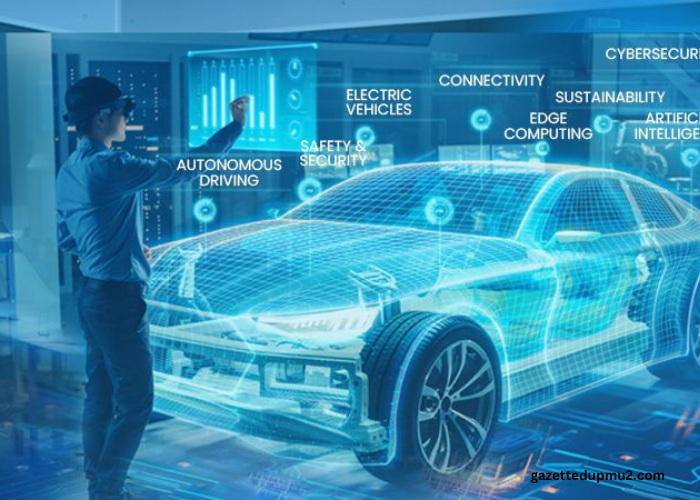Modern technology is revolutionizing the automotive industry by altering the way cars are created, maintained, and operated. Embedded systems are essential to the development of new features and technology for cars. Automobiles are depending more and more on embedded system design for everything from self-driving capabilities and advanced driver assistance systems (ADAS) to basic tasks like engine control and anti-lock braking systems (ABS). But creating dependable and strong embedded systems for cars has special difficulties. We will look at some of the main obstacles and possibilities in the development of automobile embedded systems in this post.
Reliability
One of the main concerns with automobile embedded systems is reliability because any malfunction or breakdown could pose a risk to public safety. For the duration of the vehicle’s life, which is often more than ten years, automotive embedded systems must function flawlessly in all driving scenarios and weather extremes. Electromagnetic interference, moisture, heat cycles, and vibrations must all be tolerated by components. Programs must be free of errors and safe from online threats. To guarantee reliability, extensive testing and validation are needed. Timelines and expenditures for development go up as a result. But there is a chance to create new testing techniques and instruments that can assess systems fully and more affordably. Before physical prototypes are constructed, technologies like emulation and simulation can assist in realistically testing driving situations spanning billions of miles.
Security
With increased connectivity in modern vehicles, cybersecurity is a major concern for automotive embedded systems. As software-defined vehicles become the norm, they are more vulnerable to hacking which can enable threats ranging from data theft to potential safety issues. Developing secure-by-design systems with multiple layers of protection is challenging. OEMs need expertise in automotive security best practices, standards compliance, identity management, intrusion detection and over-the-air software updates. On the positive side, the focus on security presents opportunities for embedded systems companies to offer specialized security services and solutions. It is also driving innovation in new security architectures, protocols and technologies.
Functional Safety
Functional safety standards like ISO 26262 impose stringent requirements for automotive embedded systems to minimize risks in the event of failures or errors. Hazard analysis and risk assessment needs to be done from the early design stages. Techniques like fault tree analysis, failure mode and effect analysis (FMEA) are required. Redundancy has to be built-in for critical functions. This level of safety impacts design complexity, costs and timelines. However, it also drives the need for specialized E/E architecture services and safety engineering tools that can automate portions of the assessment and validation work. There is scope for new methodologies that simplify compliance with functional safety standards.
Performance
The performance expectations from automotive embedded systems are continuously rising with new features requiring more processing power, memory, bandwidth and low-latency communication. This poses challenges in terms of hardware selection, architecture optimization, and managing thermal loads within power and cost budgets. For example, advanced driver assistance requires high-speed computer vision and sensor fusion capabilities. Over-the-air software updates need fast and reliable wireless connectivity. The opportunities lie in developing customized silicon solutions, domain-specific accelerators and optimized embedded software stacks to meet such performance needs within form-factor and power constraints.
Heterogeneity
Modern vehicles employ a heterogeneous mix of processors, controllers, sensors and actuators from different vendors. Ensuring seamless interoperability and managing the integration of these diverse components into a cohesive architecture is a challenge. Standards help but do not solve all integration problems. There are issues around bus protocols, virtual networking, mixed criticality, safety isolation, security segmentation, over-the-air updates and remote vehicle management. This presents an opportunity for embedded systems experts who can offer specialized and designing embedded system and expertise in automotive open systems architecture.
Human-Machine Interaction
Advanced driver-assistance and autonomous driving rely extensively on human-machine interfaces, requiring sophisticated embedded HMI systems. The interface needs to be intuitive for drivers yet customizable. It should provide appropriate feedback, warnings and assistance without overwhelming or distracting the driver. The interfaces also need to factor human psychology and behavior. Developing such advanced HMI while ensuring safety and usability is challenging. Companies can offer HMI design services leveraging expertise in UX research, visual design, gesture and voice recognition. There is scope for innovative interface concepts using augmented reality, haptics and other modalities.
Software-Defined Vehicles
More features are being provided through software updates as the automotive industry moves toward software-defined cars. This presents difficulties with controlling data consumption and customer privacy, testing updates on a fleet of vehicles with different setups, remote vehicle management, over-the-air (OTA) software distribution, and update security. Additionally, it makes it possible to provide specialized over-the-air (OTA) software services in relation to fleet management portals, code signing, update package preparation, and release automation. Another recurrent revenue stream is the requirement for post-sale software to continuously improve automobiles.
Localization
Localization is an important factor that needs to be taken into consideration if automotive technology firms want to succeed internationally as they try to enter new markets. Even though the basic architecture of embedded systems may be similar, characteristics like as features, user experience, along with regulations varies greatly between nations and regions because of infrastructure, language barriers, cultural norms, as well as safety requirements. In order to achieve this, it is necessary to ensure that the vehicle and its systems adhere to various regulatory standards in each target market in addition to localizing the documentation and user interfaces to the local language. Effective localization is difficult to accomplish yet essential to the outcome. It offers chances to collaborate with regional testing organizations and provide specialized integration as well as localization services tailored to each local market.
Conclusion
Developments in software and embedded systems via semiconductor design company are revolutionizing the automotive sector. While creating durable as well as dependable embedded systems for automobiles involves particular difficulties, it also offers substantial opportunity for businesses that can provide specific domain knowledge along with solutions. Embedded systems players can create novel ideas, along with techniques, as well as tools to streamline development as well as assist OEMs in successfully introducing cutting-edge automotive technology to the market by developing a thorough grasp of the numerous difficulties.





